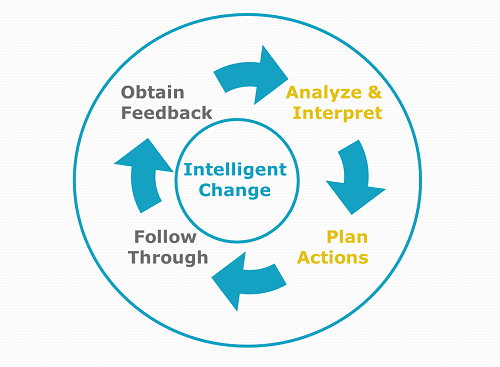When you walk in the room, who shows up for Read more →
Got a Goal? Get A Metric!
Posted Friday, May 30, 2014Goals are powerful leadership tools to focus attention and effort. But goals are incomplete without a measure of success.
Basics of Goal Setting
As a leader, goal setting is an essential part of your leadership toolbox. Like any tool, you have to use goals right:
Set SMART goals. Smart goals are specific, measurable, actionable, realistic and time-bound. Part of being realistic is making sure none of your employees have too many goals.
Coordinate goals. Use management by objectives to ensure goals are coordinated between people and organizations.
Provide metrics. Give goal-specific feedback to further shape and refine behavior. In today’s post, let’s discuss how metrics work with goals to energize behavior.
A SMART Goal Needs a Metric
A metric puts a ruler on your goal. It provides a number or a category (yes/no) on the behavior or outcome defined by the goal. If your goal is specific, measurable and time-bound, then a metric should naturally follow.
But a metric is not just some “logical” aspect of a SMART goal. A metric provides a motivational complement to a goal. A goal should focus attention and effort to drive performance. The metric shows whether the performance meets expectations. If all is well – the metric shows the goal is being accomplished – then the person should continue their efforts.
If the metric shows all is not well – the goal is not being accomplished – then the person needs to change something. Maybe they need more effort – working harder. Maybe they need different effort – working smarter. Maybe they need better support from you as their leader – better equipment, a bigger budget, just-in-time training, better performance coaching, or whatever.
Missing a goal should trigger a cycle of intelligent change:
The initial feedback (unmet goal) . . .
should lead the employee and the leader to analyze and interpret the causes . . .
plan actions to improve performance to the goal and . . .
then follow through with the actions to improve performance.
If the change is simple and easy, one turn of the wheel may be enough. A sales person contacts more prospects and meets their sales quota. Or an operations manager schedules smaller and more frequent deliveries of stock to reduce inventory carrying costs. The simple and easy change drives improved performance, the goal is met, and all is well.
Many times, the change will not be easy and simple. For example, a general manager may miss their profitability goal or a brand manager may miss a market share goal. If the needed changes are complex or difficult, the planned actions may need to be many mini-experiments:
Mini-experiments are planned actions driven by feedback, dialogue and insight. When the mini-experiment is completed, we have another round of feedback, dialogue and insight. And another mini-experiment. The beauty of many mini-experiments is something is bound to make a difference. That’s why we call it intelligent change.
It all starts with a SMART goal supported by the right metric. If a goal provides the power – the effort and attention to drive performance – then a metric provides the measurement to guide the continued application of the power.
In my workshop, I have a number of tools. I am especially fond of power saws. I was coached to “Measure twice. Cut once.” In other words, have your ruler in place before applying the power of the saw.
Bottom line: A metric is a tool of leadership that provides a motivational complement to a goal. Just like you should not use a saw without a ruler, you should not set a goal without a metric.




Pingback: Images of Goals and Metrics